Jewish History
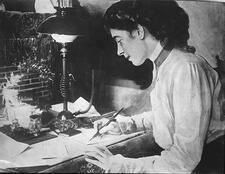
Communism in the United States
From the 1920s into the 1950s, the Communist Party USA was the most dynamic sector of the American left, and Jewish women—especially Yiddish-speaking immigrants and their American-born daughters—were a major force within the party and its affiliated organizations. Their numbers included community organizers, labor activists, students, artists and intellectuals. When the communist movement faded in the 1950s, these women carried radical traditions into new movements for social justice and international cooperation.
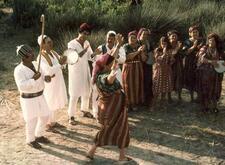
Community Dance Practices in the Yishuv and Israel: 1900-2000
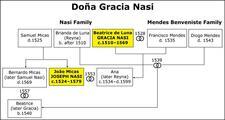
Conversas
After the establishment of the Inquisition in 1478, observance of crypto-Judaism became dangerous and more difficult. Women were at the center of Judaizing efforts, since the home was the only remaining institution in which one could observe Jewish law. Crypto-Jewish women most frequently observed the Sabbath and dietary laws.

Gerty Theresa Cori
Rose Laub Coser
Sociologist Rose Laub Coser redefined major concepts in role theory—the idea that our actions are largely dictated by our roles in society—and applied them to expectations of women’s roles in the family and the workplace.
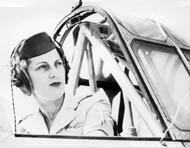
Selma Cronan
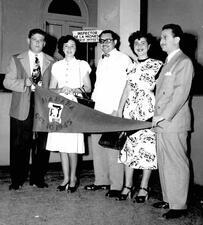
Cuba
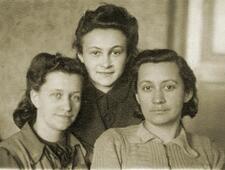
Liza Czapnik
Liza Czapnik was a Polish freedom fighter during World War II who started working against the Nazi occupation after witnessing a mass murder of Jewish people near her hometown. After being interned in the Grodno ghetto, she escaped and began working as a courier for the anti-fascist underground in Bialystok. After the war, she earned a PhD and taught English until 1991, when she made Aliyah and settled in Beersheva.

Dance in the Yishuv and Israel
Artists began to try to create a new Hebrew dance in the 1920s. Israeli Expressionist Dance flourished first, followed by American modern dance. Israeli dance became professionalized and centralized, and over the past few decades, efforts to promote local creativity accelerated, ethnic dance companies have flourished, and choreographers have taken increasingly political stances.
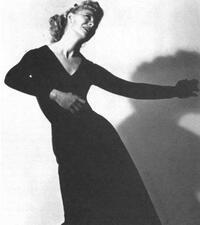
Modern Dance Performance in the United States
Jewish immigrants to the New World brought with them their ritual and celebratory Jewish dances, but these traditional forms of Jewish dance waned in the United States. Working-class and poor Jewish immigrants parents sought out culture and education in the arts for their children, often as a vehicle for assimilation. Jewish women were particularly attracted to the field of modern dance.
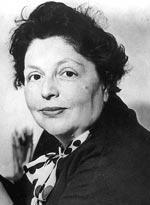
Lucy S. Dawidowicz
Lucy S. Dawidowicz was an American-Jewish historian whose influential and controversial works reflect her deep personal and academic commitment to the Jewish people. She spent time in Poland immediately before the Holocaust and time in Germany immediately after it. Dawidowicz’s works, which received numerous awards, concern American and Eastern European Jewry, and the Holocaust.

Devorah Dayan
Devorah Dayan was a symbol of the new Hebrew woman in pre-state Israel: she was maternal, rooted in the land, and fulfilled the values of a pioneer society. Her long writing career mostly comprised of autobiographical essays in publications for the women workers’ movement.

Teresa de Lucena
Teresa de Lucena was born in Toledo, Spain, in 1467, the fifth of six daughters in a distinguished converso family. She faced the Spanish Inquisition twice—at seventeen and at 62—and she survived. Details about how she and her peers defied the Inquisition and continued to practice Judaism in secret come to life in her trial testimony, captured by scribes as she spoke.

Edis De Philippe
Opera in Israel owes its creation primarily to singer, director, producer, and impresario Edis De Philippe. De Philippe made her New York opera debut in 1935 before performing with the Paris Opera and touring Europe and South America. She then founded the Israel National Opera Company in 1947 and ran it until her death in 1979.
Vera Dean
While her book, Builders of Emerging Nations (1961) discusses the important qualities necessary to be a leader in the political arena, Vera Dean’s life was a testament to her own leadership abilities. Dean helped shape American foreign policy and opinion on international relations, as both an educator and a writer.

Ida Dehmel
Living a privileged existence in the wealthiest circles of German cultural society, Ida Dehmel became involved in circles of patronage of modern art that raised awareness for feminist issues, including women’s suffrage and equality for women’s artists’ associations. In 1916 she co-founded the Women’s Society for the Advancement of German Art.
Demography: Soviet Union, the Russian Federation and other Successor States
The statistics on Jewish marriage, divorce, fertility, emigration, and aging within the Soviet Union reveal new pockets of history and can shed light on the effects of historical events on Jewish lives.

Friedl Dicker-Brandeis
Friedl Dicker was an artist and educator who studied at the Bauhaus school then led art classes at Terezin. In the ghetto, Dicker taught drawing to hundreds of children, designed sets and costumes for children’s performances, and made an exhibition of children’s drawings in a basement. She also created her own sketches, many of which were discovered in the 1980s.
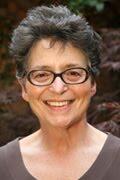
Barbara Dobkin
Barbara Berman Dobkin is the pre-eminent Jewish feminist philanthropist of the end of the twentieth and beginning of the twenty-first century. Her vision, dedication, and philanthropic generosity have transformed the landscape of Jewish women’s organizations and funding in both North America and Israel.
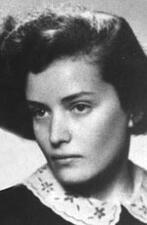
Gusta Dawidson Draenger
Gusta Dawidson Draenger was active in resistance movements during World War II, enduring imprisonment and torture. Her famous work, Justina’s Diary, recalls her experiences within the resistance and while incarcerated.
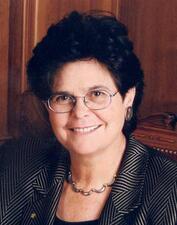
Ruth Dreifuss
Ruth Dreifuss was the first Jewish member of the Federal Government of Switzerland and the first female President of the country. When she became President of the Confederation in 1999, she was the first Jew and the first woman to hold the office.

Berta Blejman de Drucaroff
Berta Blejman de Drucaroff was a prominent activist of the Yiddisher Kultur Farband (YKUF/ICUF) and a communist militant in anti-fascist organizations. She was president of the YKUF Women's Organization (OFI) and the main promoter of the reading circle network (leien kraizn) in Argentina.
Sophia Dubnow-Erlich
After finishing her education, Sophia Dubnow-Erlich became an active member of both the Social Democratic Labor Party and the Jewish Labor Party and wrote for Bund journals before fleeing Vilna for Warsaw in 1918. After emigrating to America in 1942, she remained politically active and continued her prolific writing career.



